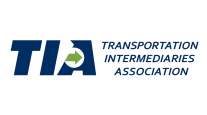Carriers, Intermodal Providers Look to Younger Drivers

[Stay on top of transportation news: Get TTNews in your inbox.]
LONG BEACH, Calif. — The driver shortage remains a top concern for fleets, and carriers are working to attract new and younger entrants into the industry.
“Companies are really putting their money where their mouth is and putting in efficiency funnels to bring in new talent,” said Jacquelyn McManus, CEO of KJ Media, who spoke on the Addressing the Driver Shortage panel at the Intermodal Association of North America’s Intermodal Expo.
Meanwhile, during a different session, Ben Banks, vice president of TCW Inc., said drivers currently have to be 21 to drive interstate, which hinders recruiting.
“When you’re 21, you’ve probably found a career plan, you’re excelling in it,” he said.

Banks
Jennifer Edwards, senior director of sales and agency relations for the Evans Network of Cos., said companies also need to evaluate the level of experience they require.
“It is hard to say you have to have two years of experience wherever you go, but no one will give you that experience,” she said.
TCW, based in Nashville, is working with commercial driver license schools and putting drivers with zero experience in the cab once they’ve completed an extensive training program at the company, Banks said.
The South Carolina Ports Authority has started an apprenticeship program that brings 18-20-year-olds in, trains them to drive and puts them to work repositioning chassis.
“We felt like there wasn’t enough push in the marketplace to develop a program that is a long-term solution,” said Stevenson Kemp, vice president of intermodal chassis and operations projects at the South Carolina Ports Authority. “This gives them a program to learn over a two-year period. Then they can drive in multiple markets or become entrepreneurial and have their own company.”
The ports authority works with the South Carolina Trucking Association and Trident Technical College. “We’re trying to add some impact to reduce the shortage,” Kemp said.
Some companies are recruiting for warehouse positions where employees can work before earning a CDL, which the company covers, McManus said.
“They can work there and, if they choose to, they can transition to an office. We’re showing you don’t need a college education and $200,000 worth of debt,” she said.
Dave Harrison, executive director of workforce development and government relations for Fastport, said carriers can tap into existing programs to help attract, train and retain drivers.
For example, veterans eligible for the GI Bill taking part in an apprenticeship program can receive a $1,500 monthly housing benefit, which doesn’t cost the carrier. He added that apprenticeship programs have a 93% retention rate.
Harrison said if numbers stay true, the industry will be short 150,000 drivers by 2030.
“The aging of the workforce, the silver tsunami, it applies — 40% of the people we’ll lose are going to retire,” he said. “We’re also losing people because they’re being disqualified.”
About 90,000 drivers were disqualified as part of the Drug and Alcohol Clearinghouse, and just 23,000 have reapplied, Harrison said. Driver demand is also being shaped by growth.
“We’re looking at capacity demands people have never seen before. The population is not getting smaller.”
Dave Hensal, CEO of Eagle Systems, said he is getting plenty of applicants, but the challenge is finding qualified drivers.
McManus said fleets need to take a multifaceted approach to attract drivers. First, fleets have to get potential hires interested, and 5-second video clips have the highest conversion rates, she said. Then, most candidates do a Google search to learn more about the company and its culture, which is especially important among Gen Z.

Tamara Jalving of Yellow joins TT's Connor Wolf to discuss driver recruitment. Tune in above or by going to RoadSigns.ttnews.com.
“A lot of ads now are crafted on abstract details. Employees want to apply to a company where they see themselves in the ad,” McManus said. “We have to pivot as an industry to speak to this generation so we can bring them into the industry, keep them and grow them.”
Increasing pay will help attract more drivers, and Harrison said salaries have been increasing.
“We have people making $80,000 to $110,000 a year transitioning from the military, and we have some doing better than that,” he said.
Pay has changed enough that it is not a reason drivers leave, Kemp said.
Harrison encouraged attendees to get involved with local workforce boards. “Policy is made there, and billions of dollars are spent. That is money that could help you pay for programs, training drivers,” he said.
Panelists also said education has to start with the younger generation to show them opportunities within the industry.
“There is not a high school education counselor that is evaluated on how many people go into a trade school or apprenticeship,” Harrison said.
Want more news? Listen to today's daily briefing below or go here for more info:




